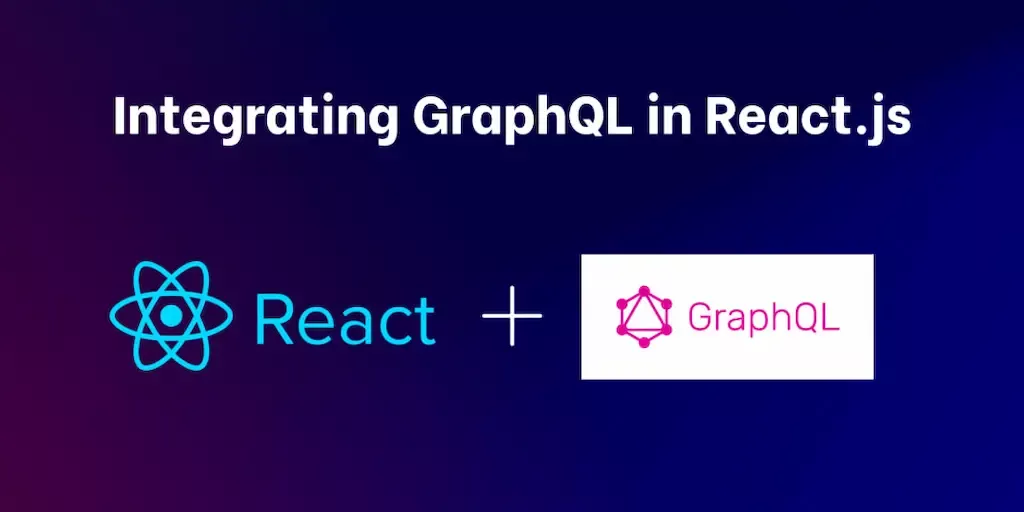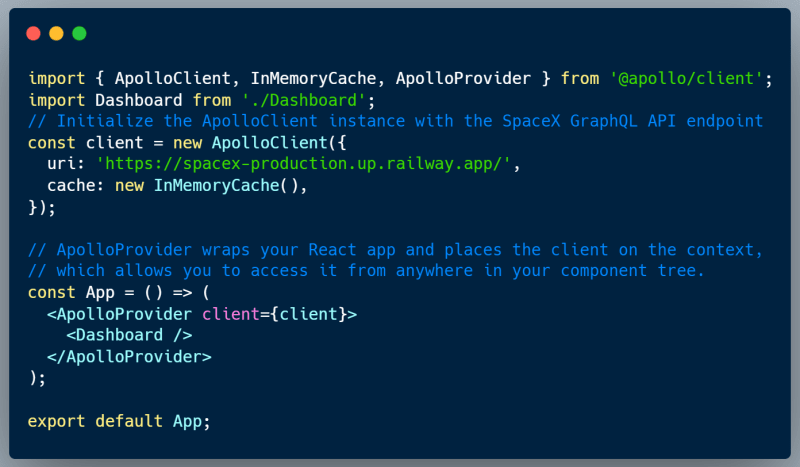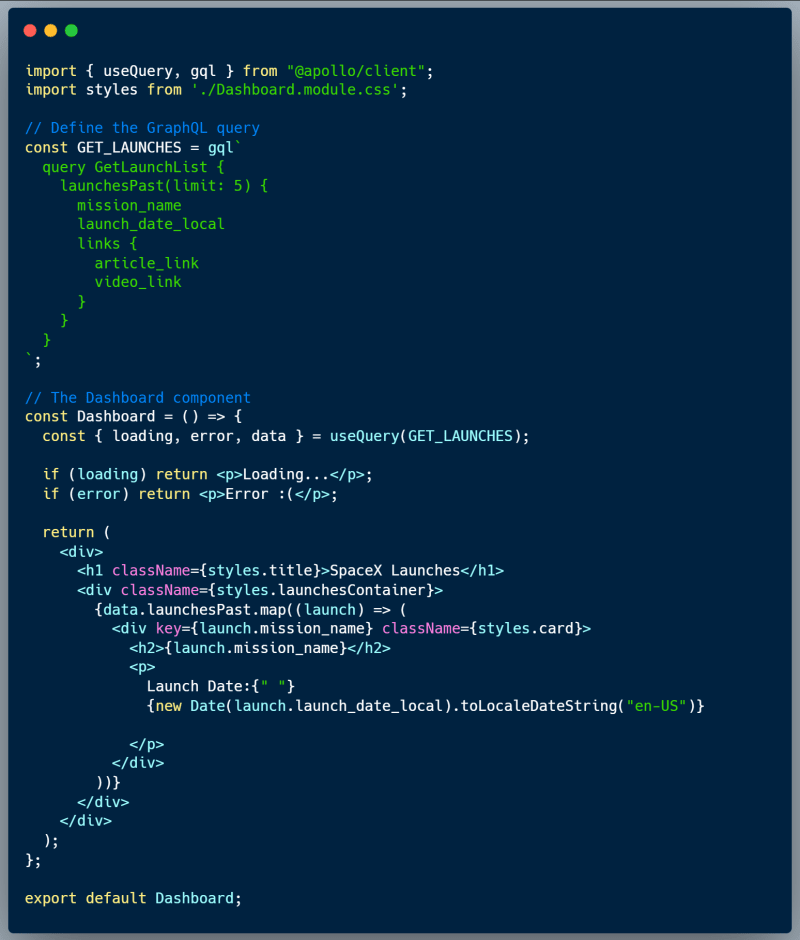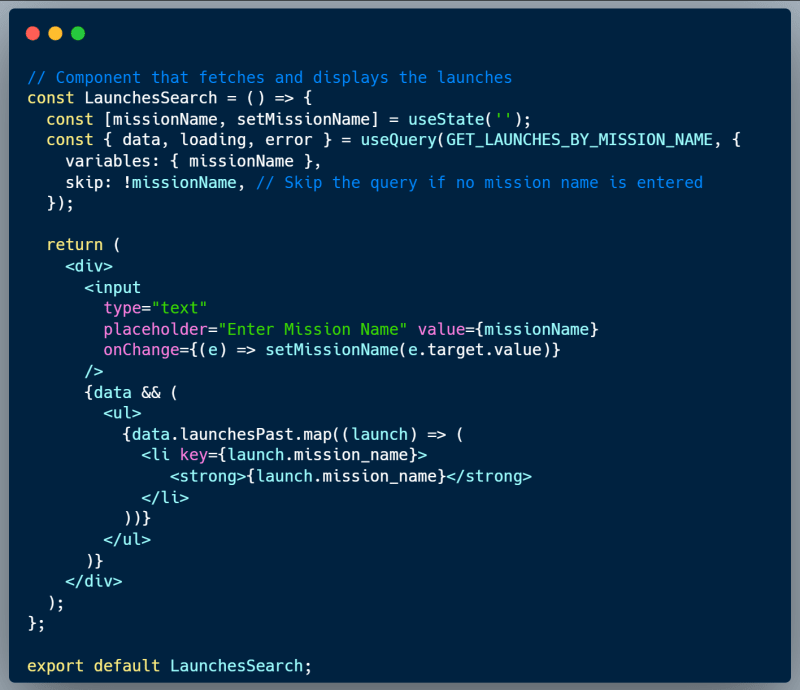
Integrating GraphQL in React.js: Simplifying Data Fetching

GraphQL has revolutionized the way developers interact with APIs. Unlike REST APIs
GraphQL has revolutionized the way developers interact with APIs. Unlike REST APIs, GraphQL allows clients to request exactly the data they need, no more, no less. In React.js, integrating GraphQL enhances the component's data-fetching capabilities by making the data retrieval process more efficient and precise. In this blog, we'll walk through the steps to integrate a GraphQL API with a React.js application using Apollo Client.
What is GraphQL?
GraphQL is a query language for your API, and a server-side runtime for executing those queries by parsing your data. It isn't tied to any specific database or storage engine and is instead backed by your existing code and data.
To integrate GraphQL into a React.js application, we will use Apollo Client , a popular, feature-rich GraphQL client that provides a comprehensive approach to data management in modern web applications.
Setting Up Apollo Client
To integrate Apollo Client into your React app, you'll first need to install it:
npm install @apollo/client graphql
Next, you’ll need to set up ApolloClient and the ApolloProvider . This provider component uses React's Context API to make a client instance available throughout the component tree.
For demonstration purposes, we'll use the SpaceX GraphQL API , which is a public API that provides data about SpaceX launches.
Here's how you configure Apollo Client with this real GraphQL endpoint:

With this configuration, your React application is now ready to query the SpaceX API and render the data in your UI. You can use the provided useQuery , useMutation , and useSubscription hooks to interact with the API according to your application's needs.
Fetching Data in the Dashboard Component
Within the Dashboard component, you can now make use of Apollo Client's useQuery hook to fetch data from the SpaceX API. The useQuery hook leverages React's Hooks API to fetch and load data from GraphQL queries.
Here's an example of how to use useQuery to retrieve a list of SpaceX launches:

In this code, we are creating a simple UI that maps over the array of past launches returned by the GET_LAUNCHES query. Each launch is displayed in its own div with details such as mission name, launch date.
Advanced Data Fetching Techniques with Apollo Client
As you become more comfortable with the basics of fetching data using Apollo Client, you'll soon run into scenarios that require more advanced techniques. Let's delve into some of these techniques to enhance your React applications.
Using variables in your GraphQL queries allows you to write dynamic and reusable queries that can adapt based on user interaction or component state changes. Let's walk through an example where users can filter a list of launches by a mission name that they input into a search field.
First, we define our GraphQL query to accept a variable for the mission name :
// Define the GraphQL query with a variable
const GET_LAUNCHES_BY_MISSION_NAME = gql`
query GetLaunchesByMissionName($missionName: String!) {
launchesPast(find: { mission_name: $missionName }) {
mission_name
launch_date_local
}
}
`;
Next, we'll create a React component with a search field where users can type in a mission name . We'll use Apollo Client's useQuery hook to fetch the launches based on the mission name provided.
Here's a concise example of how that might look in your React component:

In the LaunchesSearch component, we are maintaining the state for missionName which is updated whenever the input field changes. The useQuery hook then uses this state as a variable for the GraphQL query, which will refetch the data whenever the missionName changes. The skip option is used to avoid executing the query before the user has entered a search term.
This pattern is highly effective for creating interactive and responsive interfaces that provide feedback to the user as they search or filter data.

